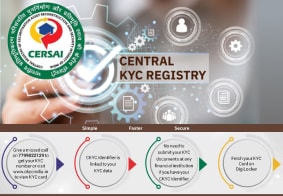CKYC Registry
-
Customer Service Contact us Service request Locate a branch
Find all the help you need
Scan the QR, get our app, and find help on your fingertips

Help CenterSupport topics, Contact us, FAQs and more
-
Login
Are you ready for an upgrade?
Login to the new experience with best features and services
-
Login
Are you ready for an upgrade?
Login to the new experience with best features and services
- Accounts
-
Deposits
IDFC FIRST Bank Deposits
View all Deposits -
Loans
IDFC FIRST Bank Loans
View all Loans - Wealth & Insure
-
Payments
IDFC FIRST Bank Payments
View all Payments -
Cards
IDFC FIRST Bank Cards
View all Cards - Blogs
- Corporate Account
-
Cash Management Services
IDFC FIRST Bank Cash Management Services
View all Cash Management Services - Supply Chain Finance
-
Corporate Lending
IDFC FIRST Bank Lending
View all -
Treasury
IDFC FIRST Bank Treasury
See more details - NBFC Financing
Support topics, Contact us, FAQs and more
- IDFC FIRST Bank Accounts
-
Savings Account
-
Corporate Salary
Account -
Senior Citizens
Savings Account -
First Power
Account -
Current Account
-
NRI Savings
Account -
TASC Institutional
Account -
Savings Account
Interest Calculator
- IDFC FIRST Bank Deposits
-
Fixed Deposit
-
Recurring Deposit
-
NRI Fixed Deposit
-
Safe Deposit Locker
-
FD Calculator
-
RD Calculator
- IDFC FIRST Bank Loans
-
Personal Loan
-
Consumer Durable
Loan -
Home Loan
-
Business Loan
-
Professional Loan
-
Education Loan
-
New Car Loan
-
Pre-owned Car Loan
-
Two Wheeler Loan
-
Pre-owned Two
Wheeler Loan -
Commercial Vehicle
Loan -
Gold Loan
-
Loan Against Property
-
Loan Against Securities
-
Easy Buy EMI card
-
Personal Loan
EMI Calculator -
Education Loan
EMI Calculator -
Home Loan
EMI Calculator
- IDFC FIRST Bank Wealth & Insure
-
FIRST Select
-
FIRST Wealth
-
FIRST Private
-
Mutual Funds
-
Sovereign Gold Bond
-
Demat Account
-
Term Insurance
-
Life Insurance
-
Health Insurance
-
General Insurance
-
Bonds
-
Loan Against
Securities -
Portfolio Management
Service
- IDFC FIRST Bank Payments
-
FASTag
-
Credit Card
Bill Payments -
UPI
-
Funds Transfer
-
Forex services
-
Pay Loan EMI
- IDFC FIRST Bank Cards
-
Ashva :
Metal Credit Card -
Mayura :
Metal Credit Card -
FIRST Millennia
Credit Card -
FIRST Classic
Credit Card -
FIRST Select
Credit Card -
FIRST Wealth
Credit Card -
FIRST WOW!
Credit Card -
Deals
-
Debit Cards
-
Co-branded Cards
-
Credit Card
EMI Calculator -
FIRST Corporate
Credit Card -
FIRST Purchase
Credit Card -
FIRST Business
Credit Card
- Premium Metal Credit Cards
-
AshvaLifestyle1% Forex₹2,999
-
MayuraLifestyleZero Forex₹5,999
-
FIRST PrivateInvite Only
- Best for travellers
-
MayuraZero ForexMetal₹5,999
-
Ashva1% ForexMetal₹2,999
-
FIRST WOW!Zero ForexTravelLifetime Free
-
FIRST SWYPTravel OffersEMI₹499
-
FIRST Select1.99% ForexLifestyleLifetime Free
-
FIRST Wealth1.5% ForexLifestyleLifetime Free
-
Club VistaraTravelLifestyle₹4,999
-
IndiGo IDFC FIRST Dual Credit CardTravelLifestyle₹4,999
- Max benefits, Free for life
-
FIRST Classic10X RewardsShoppingNever Expiring Rewards
-
FIRST Millennia10X RewardsShoppingNever Expiring Rewards
-
FIRST Select10X RewardsLifestyle1.99% Forex
-
FIRST Wealth10X RewardsLifestyle1.5% Forex
-
FIRST WOW!RewardsTravelZero Forex
-
LIC ClassicRewardsInsuranceShopping
-
LIC SelectRewardsInsuranceShopping
- Reward Multipliers
-
AshvaLifestyleMetal₹2,999
-
MayuraLifestyleZero Forex₹5,999
-
FIRST ClassicNever Expiring RewardsShoppingLifetime Free
-
FIRST MillenniaNever Expiring RewardsShoppingLifetime Free
-
FIRST SelectNever Expiring RewardsLifestyleLifetime Free
-
FIRST WealthNever Expiring RewardsLifestyleLifetime Free
- Rewards & Credit on UPI
-
FIRST Power+FuelUPI₹499
-
FIRST PowerFuelUPI₹199
-
FIRST EA₹NVirtual1% Cashback₹499
-
FIRST DigitalVirtualUPI₹199
-
IndiGo IDFC FIRST Dual Credit CardUPITravelDual cards
- Fuel and Savings
-
FIRST PowerRewardsUPI₹199
-
FIRST Power+RewardsUPI₹499
-
LIC ClassicRewardsInsuranceShopping
-
LIC SelectRewardsInsuranceShopping
- Express and Flaunt
-
AshvaMetal1% Forex₹2,999
-
MayuraMetalZero Forex₹5,999
-
FIRST SWYPEMIOfferMAX₹499
-
FIRST MillenniaRewardsShoppingLifetime Free
- FD Backed rewarding Credit Cards for all
-
FIRST EA₹NVirtualCashback₹499
-
FIRST WOW!Zero ForexTravelLifetime Free
-
CreditPro Balance TransferTransfer & SaveReduce InterestPay Smartly
- IDFC FIRST Bank NRI Forex Solutions
-
Send money to India-Wire transfer
-
Send money to India-Digitally
-
Send money abroad
-
Max Returns FD (INR)
- IDFC FIRST Bank MSME Accounts
-
Platinum Current
Account -
Gold
Current Account -
Silver Plus
Current Account -
Merchant Multiplier
Account -
Agri Multiplier
Account -
TASC Institutional
Account -
Dynamic Current
Account -
World business
Account -
First Startup
Current Account
- IDFC FIRST Bank Business Loans
-
Business Loan
-
Professional Loan
-
Loan Against Property
-
Business Loan for Women
-
Working Capital Loan
-
Construction Equipment Loan
-
Machinery Loan
-
Healthcare Equipment Loan
- IDFC FIRST Bank Business Solutions
-
Payment Solutions
-
Tax Payments
-
Doorstep Banking
-
Point of Sale (POS)
-
Escrow Accounts
-
NACH
-
Payment Gateway
-
UPI
-
Virtual Accounts
-
As per amendment in the Income Tax Rules, PAN or Aadhaar are to be mandatorily quoted for cash deposit or withdrawal aggregating to Rupees twenty lakhs or more in a FY. Please update your PAN or Aadhaar. Kindly reach out to the Bank’s contact center on 1800 10 888 or visit the nearest IDFC FIRST Bank branch for further queries.
-
-
Most Searched
Sorry!
We couldn’t find ‘’ in our website
Here is what you can do :
- Try checking the spelling and search
- Search from below suggestions instead
- Widen your search & try a more generic keyword
Suggested
Get a Credit Card
Enjoy Zero Charges on All Commonly Used Savings Account Services
Open Account Now
When it comes to planning for your goals, a one-size-fits-all approach will not do. An investment strategy that works for a foreign vacation at the end of the year will be a terrible fit for your retirement planning. It is crucial to know the “when’s” of your goals so that you can plan and invest efficiently for them. Short, medium and long-term goals are different and each requires its own investment approaches and avenues. Time-based financial goal-planning helps structure your financial progress and successfully achieve each of your goals. If it sounds complicated, don’t worry; here is your guide on how you can do it.
Goal Planning Using the SMART Strategy Method
S – Specific
Your goals should be as specific as possible. Suppose you want to buy a sports bike next year; your goal can be something like, “I will save Rs 2.5 lakh by August 2023 to buy a sports bike.” This way, you have a clear goal and amount to work towards.
M – Measurable
It would help if you had a measurable, quantifiable goal in mind. It is not enough to say that you want to save enough for your retirement. Instead, you should estimate the amount you think will be sufficient to spend your retirement years comfortably. You should be able to track the progress of your goal as well.
A – Attainable
Keep your goals attainable and real. Work out how you can achieve your goal with the help of smart investing, funding, advice from friends and experts, and so on.
R – Relevant
Your goals should be relevant to your future. So if you plan on spending your retirement in a hill station, saving up for a retirement property in a big city will not help.
T – Time-bound
Your goals should be broken up into short, medium, and long-term goals, allowing you to choose investment vehicles that best fit each time frame and goal.
READ MORE
Short-term Goals
Short-term goals have a time frame of a few months to three years. Some examples of short-term goals are paying off a credit card, saving for a vacation, or buying an expensive gadget. The shorter timeframe of these goals requires the money you set aside to be easily accessible and liquid.
Therefore, the investment vehicles should be on par, such as:
Savings Bank Accounts
This is the simplest way to save with no risk attached. Funds parked in a savings account are highly liquid, but the returns are minimal.
Short-term Fixed Deposits (FDs)
These have a maturity period of 7 days to less than a year. Their return rate is anywhere between 3% to 6%. But you may be penalised for withdrawing your money prematurely.
Short-term Debt Funds
These invest in securities with high credit ratings and have a proven track record. They are relatively safe and may offer better returns than other investment options. If your goal has a time horizon of fewer than three months, you can go for liquid mutual funds. They have a maturity of up to 91 days, making them less prone to interest rate volatility.
Ultra-short-term Funds
If your goal has a time horizon of 3 to 6 months, you can invest in ultra-short-term funds. These have an investment horizon of anywhere between one week to 18 months. For a horizon of two to three years, short-term funds are a good option.
Medium-term Goals
These goals have a timeframe of 3 to 7 years. Your goals here could be buying a car, funding a new venture, or home renovations. With these goals, a balance needs to be struck between the risk and growth of your investment.
The investment options here are:
Bank FDs
Long-term FDs have an investment horizon of 5 to 10 years. Their interest rates are usually higher than short-term FDs, ranging from 5 to 7%. They offer guaranteed returns with stable interest rates. However, the lock-in period is long, and there are penalties for withdrawing prematurely.
Equity Mutual Funds
These funds invest at least 60% in equity assets. They offer good returns and are great for wealth creation. In order to beat inflation, remain invested for at least 5 to 7 years. You can save tax by investing in tax-saving equity funds. These funds are easily redeemable. Moreover, you can invest in them using Systematic Investment Plans (SIPs) rather than a lump sum investment.
Dynamic Asset Allocation funds
These hybrid funds have a mix of equity and debt investments. The fund manager apportions the fund corpus into debt or equity according to market conditions. So you get the benefit of wealth creation, as well as the protection of your investment. These funds are great for portfolio diversification.
Long-term Goals
These are goals that have a timeframe of over seven years. Some long-term goals may be a financially-secure retirement, your child’s education, or buying a second house. Here are some investment avenues for your long-term goals:
Well-diversified Stock Portfolio
Staying invested for 10 to 15 years in a well-diversified stock portfolio can be very rewarding in the long run. You are more likely to ride out market volatility.
Index Funds
These funds are set to track indices such as Nifty and Sensex. They help to bring a measure of balance to a portfolio. In a developing country like India, index funds can offer good returns.
Diversified Mutual Funds Portfolio
For the initial part of your investment journey, you can use equity funds to grow your wealth. Aim to have a mix of equity investments such as a mix of small, mid, and large-cap fund investments. As you get closer to your investment goal, you can slowly shift your investment from equity to debt funds to lessen the risk attached.
Government Saving Schemes
Aim to have a portion of your savings in government saving schemes such as the Public Provident Fund (PPF), National Savings Certificate (NSC), and National Pension Scheme (NPS). These schemes help save tax and are highly beneficial for long-term goals like retirement. Their interest rates may not be comparable to mutual funds, but they are low-risk investments.
In Conclusion
Do remember to keep evaluating your goals; medium and long-term goals eventually become short-term goals. So keep adapting to your investment goals and approach to reflect your changing requirements and priorities. Take a look at IDFC First Bank's refer and earn program which will help you earn extra income and stay updated with your investments.
Disclaimer
The contents of this article/infographic/picture/video are meant solely for information purposes. The contents are generic in nature and for informational purposes only. It is not a substitute for specific advice in your own circumstances. The information is subject to updation, completion, revision, verification and amendment and the same may change materially. The information is not intended for distribution or use by any person in any jurisdiction where such distribution or use would be contrary to law or regulation or would subject IDFC FIRST Bank or its affiliates to any licensing or registration requirements. IDFC FIRST Bank shall not be responsible for any direct/indirect loss or liability incurred by the reader for taking any financial decisions based on the contents and information mentioned. Please consult your financial advisor before making any financial decision.
The features, benefits and offers mentioned in the article are applicable as on the day of publication of this blog and is subject to change without notice. The contents herein are also subject to other product specific terms and conditions and any third party terms and conditions, as applicable. Please refer our website www.idfcfirstbank.com for latest updates.























